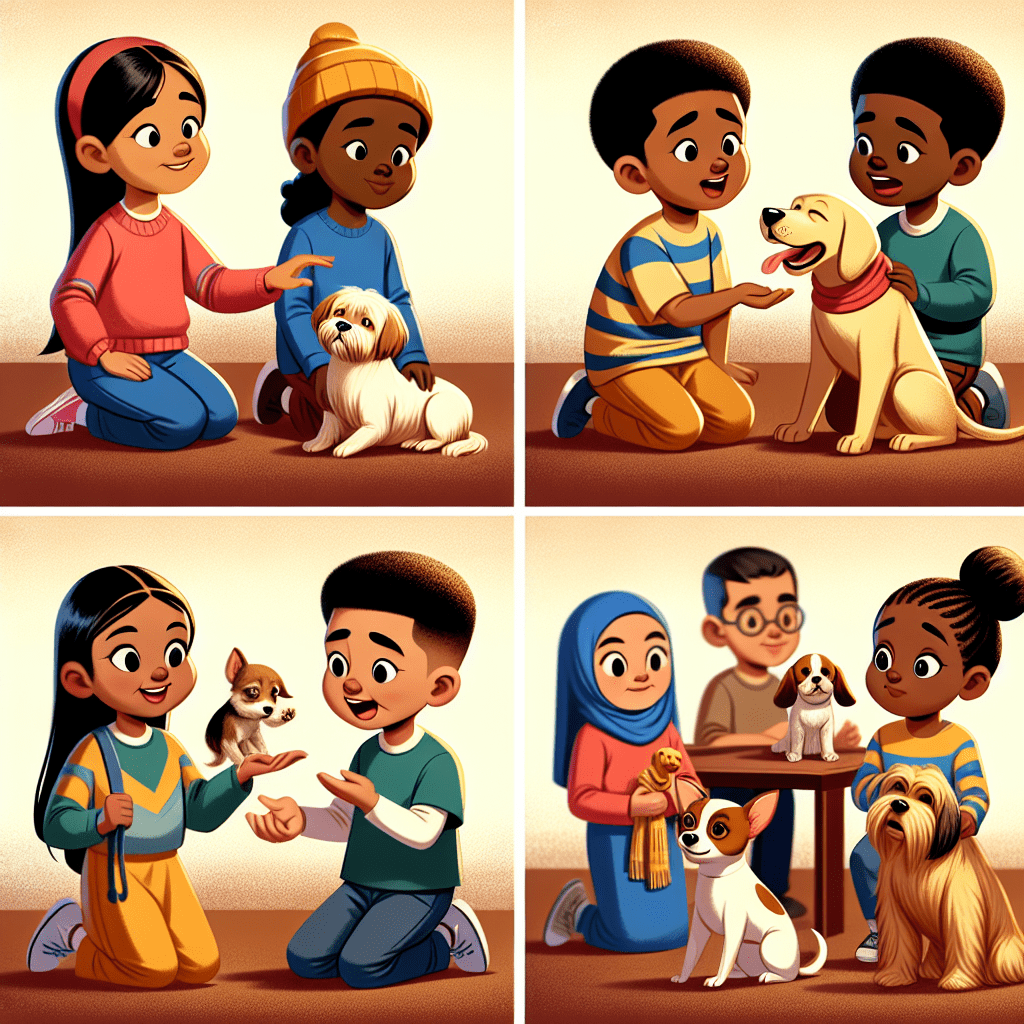

Furry Friends & Fun: Essential Tips for Kids to Play Safely with Dogs
As dog lovers, we understand how exhilarating the bond between kids and dogs can be. Our furry friends offer companionship, loyalty, and endless joy to families. They spread laughter and teach valuable life lessons to children—everything from responsibility to the beauty of unconditional love. However, as exciting as it is to play with a dog, it’s important to keep safety in mind. Dogs are wonderful companions, but they are still animals with their own instincts and behaviors.
In this blog post, we will explore essential tips for kids to safely interact with dogs while ensuring that the experience is fun for both the child and the dog. This playful guide will help foster a healthy relationship between children and dogs while keeping everyone safe, sound, and successful in their adventures together!
The first step to playing safely with dogs is understanding their body language. Just like humans, dogs communicate through non-verbal cues. Ensure your child recognizes the signs of a happy dog compared to that of an anxious or uncomfortable one.
Educating your children on these body language cues will not only enrich their bond with dogs but also keep them safe during playtime. Encourage an attitude of respect for the dog’s feelings, and remind them that we communicate best when we listen.
Meeting a new dog can be as thrilling for a child as it is for the dog. Help your child understand the best practices when encountering canines they don’t know. The idea is to approach new furry friends with both excitement and caution.
These practices can help foster a positive interaction between kids and new dogs, teaching them the importance of awareness and patience.
Playing with dogs is one of the most enjoyable experiences for children. However, it’s essential to establish some rules to ensure that playtime remains safe and fun for everyone involved.
Being considerate about how we play with our furry friends can prevent many mishaps and ensure joyful interactions during playtime.
Even the most friendly dog can become overwhelmed. Children need to be taught the signs that a dog may not be enjoying itself during interactions.
Children should understand that it’s okay to step back and give the dog some space. Respecting their boundaries is crucial in helping kids and dogs co-exist harmoniously.
How kids interact with dogs physically plays a significant role in the dog’s comfort level. Teaching children how to touch a dog gently can lead to more enjoyable interactions.
By teaching children the importance of gentle interactions, they can create a positive environment that reinforces trust with their canine friends.
No matter how responsible a child may appear, it’s critical to supervise interactions between children and dogs, particularly with unfamiliar dogs.
Making supervised interactions a priority can foster a sense of security for the child while also offering a safety net for the dog.
When children play with dogs, it’s essential to maintain a health-conscious perspective. Dogs can transmit parasites or diseases if proper measures aren’t taken.
By fostering good hygiene and health practices, kids can enjoy happy, healthy interactions with their furry friends.
Ultimately, forming a lasting bond between kids and dogs takes time and patience. Encourage behaviors that foster trust and love, which can come from simple daily interactions.
Creating a nurturing environment can help build a deep-rooted relationship between children and their furry companions.
The joy of playing with a dog is one of life’s sweetest gifts. By following essential safety tips and practices, we can foster a loving and respectful relationship between children and their furry friends. Remember that patience, understanding, and responsible behavior create the foundation for happy interactions. As dog lovers, we have the power to protect our furry companions while leading children to a delightful journey of friendship filled with fun and adventure.
Q1: Are all breeds of dogs safe for children?
A1: While many dog breeds are affectionate and good with children, some may be more suited than others depending on temperament and energy levels. Researching breeds and meeting the individual dog before play is essential.
Q2: How can I find a kid-friendly dog?
A2: Look for breeds known for their friendly nature, such as Labrador Retrievers or Golden Retrievers. Adoption centers can provide insights on the individual dog’s behavior with children.
Q3: Can dogs become aggressive during play?
A3: Yes, dogs can sometimes become too excited during play, potentially leading to undesirable behavior. Always supervise playtime to ensure positive interactions, and be aware of the dog’s body language.
Q4: How do I teach my child not to terrorize the dog during play?
A4: Establish clear boundaries for play, emphasizing gentle touch and respect for the dog’s comfort. Role-playing and using toys can show children appropriate ways to engage with the dog.
Q5: What if my child is scared of dogs?
A5: Start by allowing them to observe dogs from a distance and gradually decrease the space. Positive reinforcement, such as treats, can help create a more positive experience and relationship with dogs.
Unlock the Secrets to a Well-Behaved Dog! 🐾 Tired of your pup’s bad habits? Discover how to transform your unruly dog into a loving companion with our FREE Dog Training Mini Course! Learn essential commands, potty training tips, and effective techniques to eliminate unwanted behaviors in just days. Don’t miss out—sign up now and start your journey to a happier, obedient dog! Join Here! (https://bit.ly/3RJak0a)
Instantly Access Your Free Children’s Books Here! (https://payhip.com/BlueCherryStore) – Disclaimer: I may earn a commission from qualifying purchases as an affiliate. Please note that I only recommend products I believe will provide value to my readers.(M)